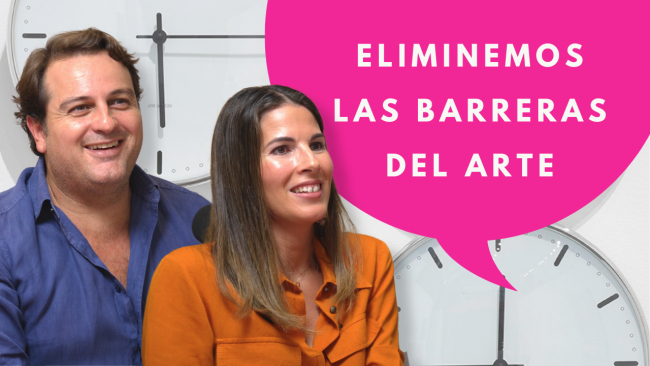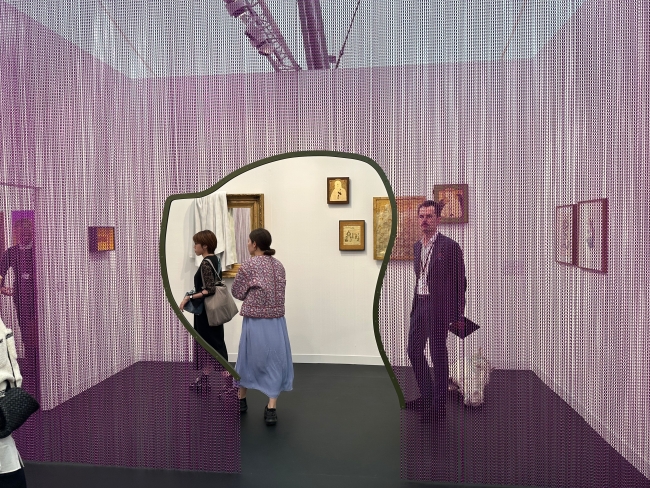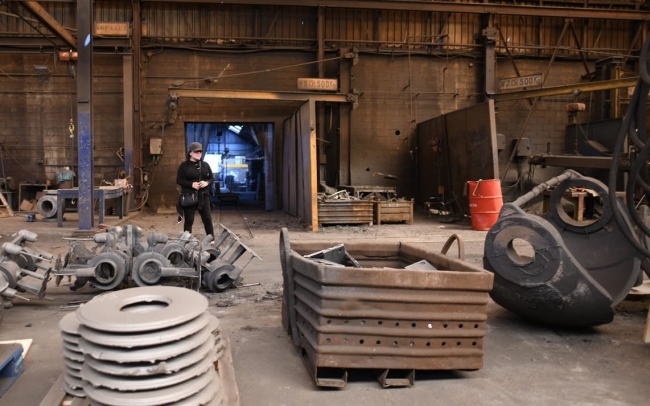Galerías y otras organizaciones que le representan
Organizaciones con obra
Profesionales con obra
Descripción del Artista
José Dávila (Guadalajara, México, 1974), vive y trabaja en Guadalajara, Mexico.
La obra de Jose Dávila cuestiona la tradición modernista que ha dado forma al arte del siglo XX; a través de la apropiación y la consecuente reconfiguración, el artista utiliza como material de trabajo las obras de ciertos artistas, poniendo especial énfasis en cómo han sido registradas y puestas en circulación a manera de imágenes. Recurriendo a la duplicación y a la alteración, Dávila fractura las dinámicas de reconocimiento que normalmente permiten la configuración de íconos y de modos de ver. Otra vía para problematizar lo anterior es transformar lo propiamente pictórico a elementos escultóricos, imponiendo consecuencias espaciales a lo que solía ser bidimensional.
Su trabajo escultórico toma como punto de partida la especificidad de los materiales utilizados, su procedencia o su valor son elementos que entran en juego; materiales industriales como el vidrio, el acero o el concreto, interactúan con materiales naturales “en crudo” como rocas o mármol. Dávila también utiliza objetos comunes como cajas de cartón para crear réplicas de otras esculturas fácilmente reconocibles, con el afán de evidenciar como ciertas formas de ocupar el espacio también se inscriben en este sistema de referencialidad visual.
Influenciado por su formación como arquitecto, Dávila dispone de los objetos como si fueran los elementos básicos del dibujo (punto, línea y plano) para crear construcciones que ponen a prueba nociones de equilibrio, estabilidad y permanencia.
Su trabajo ha sido exhibido en instituciones y museos como: Museo Universitario de Arte Contemporáneo, Ciudad de México, México; Caixa Forum, Madrid, España; MoMA PS1, Nueva York, Estados Unidos; Kunst-Werke Institute for Contemporary Art, Berlín, Alemania; San Diego Museum of Art, San Diego, Estados Unidos; Museo de Arte Reina Sofía, Madrid, España; MAK, Viena, Austria; Fundación JUMEX, Ciudad de México, México; Bass Museum of Art, Miami, Estados Unidos; Museu de Arte Moderna, Sao Paolo, Brasil; The Moore Space, Miami, Estados Unidos; NICC, Amberes, Bélgica; Centre Pompidou, Paris, France; Marfa Contemporary, Texas, EE.UU.; Voorlinden Museum, Wassenaar, Holanda, entre otros. Su obra ha sido destacada en publicaciones internacionales como: Cream 3 (Phaidon), 100 Latin-American Artists (Exit) y Megastructures-Reloaded (Hatje Cantz).
Dávila ha recibido los siguientes apoyos y reconocimientos: Andy Warhol Foundation, Kunst-Werke Residency y la Beca Nacional para Jóvenes Artistas por el Fondo Nacional para la Cultura y las Artes.
< ENG
Jose Dávila (Guadalajara, MX, 1974)
Jose Dávila’s work originates from the symbolic languages that function within art history and Western visual culture. These pictorial, graphic and sculptural languages are reconfigured as contradictory and contrasting relations, taking the correspondence between form and content to its limit.
The artist represents these oppositions through different perspectives: the association between images and words; the structural disposition of materials which entails the possibility of a harmonious balance or disarray; the use of peripheral routes in order to define architectural space and the presence of objects. Dávila’s work is essentially a multidisciplinary endeavor that presents a series of material and visual aporias, these paradoxes permit the coexistence of frailty and resistance, rest and tension, geometric order and random chaos.
A part of his work uses the appropriation and recontextualization of iconic artworks in order to question the way in which we recognize and relate visually. A series of translations and editing procedures are employed in order to modify the normal procedure of identification; materials are modified, elements are highlighted or concealed, and the languages of art movements are reproduced with local resources and within a contemporary context.
Dávila’s sculptural work is based on the specificity of the employed materials, their origin, symbolic value and their formal characteristics are elements that take great significance; industrial materials interact with organic raw materials. Dávila arranges objects as if they were basic elements of drawing (point, line and plane) for creating systems that exemplify notions of equilibrium, stability and permanence. With these sculptures Dávila intends to provide visibility to the physical processes that are required in order for things to maintain their shape and occupy space in a specific manner. Human intervention and the material disposition of things produce hybrid systems that respond to structural intuitions; technique unfolds itself as a poetic dimension.
Jose Dávila is a self-taught artist. He studied architecture at the Instituto Tecnológico y de Estudios Superiores de Occidente (Guadalajara, MX).
His work has been exhibited at the Museo del Novecento, Firenze, IT; Getty’s PST LA/LA Triennial, Los Angeles, USA; Blueproject Foundation, Barcelona, SP; Hamburger Kunsthalle, Hamburg, DE; Marfa Contemporary, Marfa, USA; Savannah College of Art and Design, Savannah, USA; Gemeentemuseum, Den Haag, NL; Museum Voorlinden, Wassenaar, NL; Museo Universitario de Arte Contemporáneo MUAC, Mexico City, MX; Caixa Forum, Madrid, SP; MoMA PS1, New York, USA; Kunstwerke, Berlin, DE; San Diego Museum of Art, San Diego, USA; Museo Nacional Centro de Arte Reina Sofia, Madrid, SP; MAK, Vienna, AT; Fundación/Colección JUMEX, Mexico City, MX; Bass Museum of Art, Miami, USA; Museu de Arte Moderna, Sao Paulo, BR; among others.
His work is part of international public and private collections such as Centre Georges Pompidou, Paris, FR; Museo Nacional Centro de Arte Reina Sofía, Madrid, SP; Inhotim Collection, Brumadinho, BR; Hamburger Kunsthalle, Hamburgo, DE. Dávila has been featured in international publications such as Cream 3, ed. Phaidon; 100 Latin American Artists, ed. Exit and the monograph The Feather and The Elephant, ed. Hatje Cantz.
Jose Dávila has been awarded with the 2017 Baltic Artists’ Award in the UK and is a 2016 Honoree of the Hirshhorn Museum in Washington DC, USA. Dávila has received scholarships and funding from the Andy Warhol Foundation and the Sistema Nacional de Creadores del Fondo Nacional para la Cultura y las Artes, Mexico. The artist lives and works in Guadalajara, MX.
Co-director and co-founder of Oficina para Proyectos de Arte (OPA) in Guadalajara (México).
Artistas similares

Arte en diálogo, 10 nov de 2023
Arte en Diálogo | Ep. 4 - Alejandro y Alejandra Lázaro: Coleccionistas
Por ARTEINFORMADO
El arte digital y NFTS son tan validos como cualquier otro medio de arte

Mercado, 15 oct de 2023
Iberoamérica en Frieze Londres 2023
Por ARTEINFORMADO REDACCIóN
La vigésima edición de Frieze Londres inauguró el día miércoles 11 de octubre reuniendo a 167 galerías en Regent’s Park.

Arte en Datos, 17 dic de 2019
Lxs 10 artistas mexicanxs con mejor Índice de Notoriedad 2019
Por GUSTAVO PéREZ DIEZ
6 hombres y 4 mujeres artistas que son figuras importantes en la escena artística mexicana e internacional y que trabajan en diferentes medios como vídeo, instalación, escultura y fotografía.

Formación. 08 may de 2025 - 17 may de 2025 / Museo Nacional Centro de Arte Reina Sofía (MNCARS) / Madrid, España